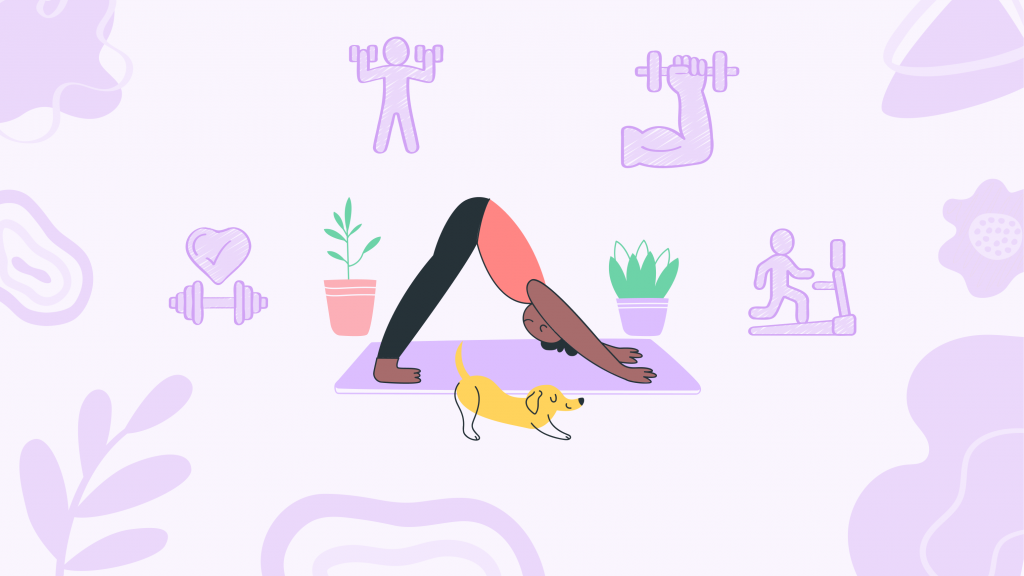Tackling the Exercise Equation
Oh, the Workout Woes, right? It’s like we’re all in this epic tug-of-war between wanting to exercise and actually doing it. We get it — exercise is good for us, but boy, does it feel like a mountain to climb sometimes!
Life just keeps throwing curveballs, with jam-packed calendars, that sneaky lack of drive, the ever-present fatigue, or that nagging fear of not quite measuring up.
And it’s not just a ‘you’ thing; it’s an ‘us’ thing, a shared beat in the rhythm of our collective lives. We’re all in this dance, trying to find our groove, moving from those once-in-a-blue-moon workout sessions to getting into a smooth, regular vibe of physical activity. It’s about turning those sporadic sprints of enthusiasm into a marathon of steady, fulfilling exercise habits.
The Biology of Movement
On a neurological level, starting and maintaining an exercise routine is a dance of habit formation and reward.
Initially, the brain may resist due to the comfort of familiar routines and the perceived effort of exercise. However, once you push past this resistance, physical activity releases endorphins, known as ‘feel-good’ hormones, which create a natural high and reinforce the habit.
Neuroplasticity, the brain’s ability to form new neural connections, plays a key role here, gradually turning sporadic exercise into a regular pattern through positive reinforcement and repetition.
Delving deeper into this fascinating biological dance, it’s not just endorphins that take center stage in the exercise saga. There’s also a surge in neurotransmitters like dopamine and serotonin, enhancing mood and contributing to that addictive feeling of well-being post-workout.
It’s like your brain’s own natural cocktail of happiness, rewarding you for getting active.
But wait, there’s more to this plot. Regular exercise can also boost brain-derived neurotrophic factor (BDNF), a protein that supports brain health, enhances cognitive functions, and is pivotal in neuroplastic changes.
This means that not only does your mood get a lift, but your brain actually becomes better at learning, adapting, and even resisting stress.
So, as you commit to moving your body, you’re not just working on your muscles; you’re literally sculpting your brain, making it more resilient and efficient. Each workout session lays down new neural pathways, making the next session a tad easier and more rewarding.
It’s a self-fulfilling prophecy of sorts, where the more you exercise, the more your brain gets into the groove, craving those feel-good vibes and making regular exercise a natural part of your life’s rhythm.
Subscribe to newsletter
Get your Gut Health Starter Guide right now.
Elevate your Tuesdays with practical, science-backed wisdom propelling you forward on your gut health journey.

Blueprint for an Active Lifestyle
- Start Small: Overwhelming yourself with lofty goals can backfire. Begin with manageable activities, like a daily 15-minute walk, and gradually increase intensity and duration.
- Schedule It: Treat exercise like any important appointment. Block off time in your calendar and stick to it, making physical activity a non-negotiable part of your day.
- Variety is Key: Mixing different types of workouts can prevent boredom and engage different muscle groups. Combine cardio, strength training, and flexibility exercises for a well-rounded routine.
- Find Your Tribe: Group classes or workout buddies provide social support, accountability, and an enhanced sense of community.
- Celebrate Success: Acknowledge milestones, no matter how small. This recognition can boost motivation and commitment.
A Journey to Joyful Movement
Maria’s story mirrors the typical exercise journey fraught with starts and stops. Working as an accountant, she found her sedentary lifestyle increasingly at odds with her health goals. “It was always ‘I’ll start Monday,’ but when Monday came, there’d be an excuse,” she recalls. The turning point came when Maria decided to shift her perspective on exercise from a chore to a form of self-care.
Starting with morning walks and yoga sessions at home, she slowly built up her fitness and confidence. “It wasn’t about becoming an athlete; it was about honoring my body’s need to move,” Maria explains. She discovered joy in movement, which transformed her approach to exercise, turning it into a cherished part of her daily routine.


















